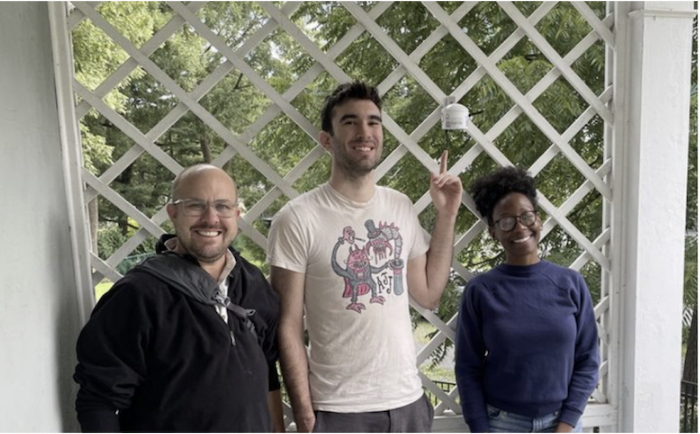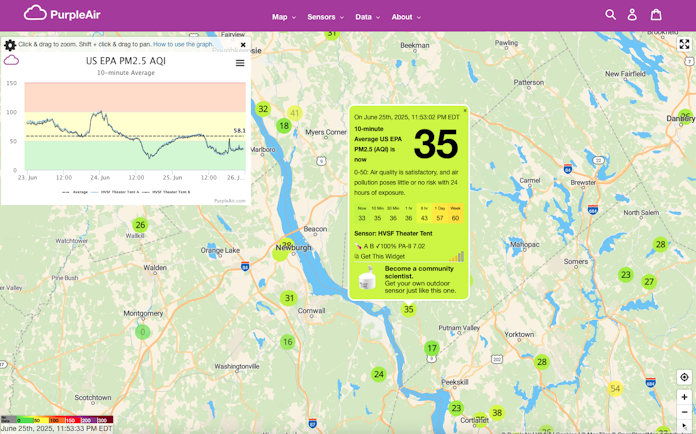Scientists install first public monitors
Eli Dueker pointed to a projected map of the U.S. covered in green dots.
Each represented a sensor used to produce air-quality reports on hot summer days, or when Canadian wildfire smoke blows south into New York.
“Notice this Hudson Valley-shaped hole here?” asked Dueker, the director of Bard College’s Center for Environmental Sciences and Humanities, during a presentation in Poughkeepsie. There were no green dots.
Desiree Lyle, who manages the Community Sciences Lab at Bard, explained that the lack of local sensors means that apps must rely on data from elsewhere “and come up with an algorithm that approximates what the air quality might be in the Hudson Valley.”
This is the problem that Bard is working on through its Hudson Valley Community Air Network (dub.sh/hvair-network). The lab has so far installed four sensors that provide real-time data through justair.app, a website created by JustAir, an environmental justice technology company.
The devices, which also measure air temperature and humidity, are located at Bard near Red Hook, Mount Saint Mary College in Newburgh, the Andy Murphy Neighborhood Center in Kingston and the roof of the Adriance Memorial Library in Poughkeepsie, where the June 24 event was held.

The program came about after Kingston’s Conservation Advisory Council asked Dueker where they could get data on air quality to identify the largest sources of local pollution. Due to the lack of sensors, there was no data.
Darren Riley, a computer scientist who co-founded JustAir, had run into the same problem. After moving to Detroit from Houston, where he grew up, Riley developed asthma. His new Michigan neighborhood was within one of the most polluted ZIP codes in the country, and many residents struggled with respiratory health issues even before the pandemic swept through.
Riley said that when the community asked local officials to address the air pollution, they kept hearing in response that there was no scientific data to prove that the neighborhood was polluted. He helped create JustAir to obtain it.
Along with the four sensors mentioned earlier, Bard has installed about a dozen air-quality monitors made by PurpleAir in the doorways of Hudson Valley libraries. “It’s another way that libraries continue to be bastions of knowledge,” said Dueker.

The data from those monitors is posted by PurpleAir online. There are only a few of the company’s sensors in the Highlands, with a notable exception being the tent at Hudson Valley Shakespeare. But they come with challenges. They start at $275 each and are placed wherever someone feels like putting one up; Riley said that he’s seen the sensors on back porches next to charcoal grills. And because PurpleAir owns the data, it could disappear if the company shuts down or is sold.
PurpleAir charges $500 in annual licensing fees per sensor to allow its data to be posted on a public website such as JustAir. That’s a steep price, but over the past few months, the Trump administration has removed an enormous amount of public climate data. “There’s no way the Environmental Protection Agency can be with you everywhere you go to make sure that you’re safe and healthy,” said Dueker. “The only folks who can do that are the people who live and breathe and work and drink water in the town or the city that you live in.”
During the Poughkeepsie presentation, Riley displayed a map of the JustAir network in Detroit. The sensor readings were shown as brown, reflecting one of the worst possible ratings. “This is what we mean by environmental justice,” he said. “For some people, the world is already on fire.”

